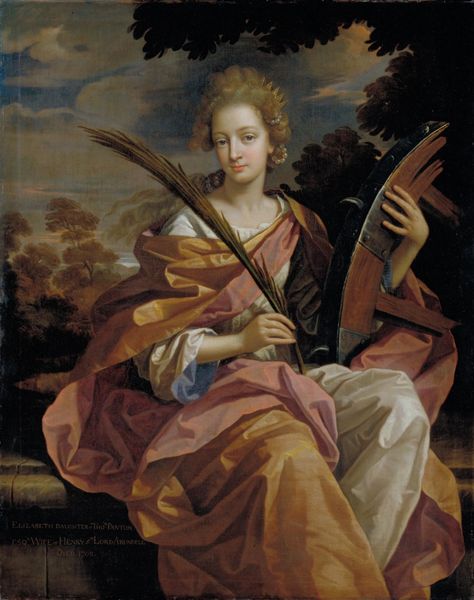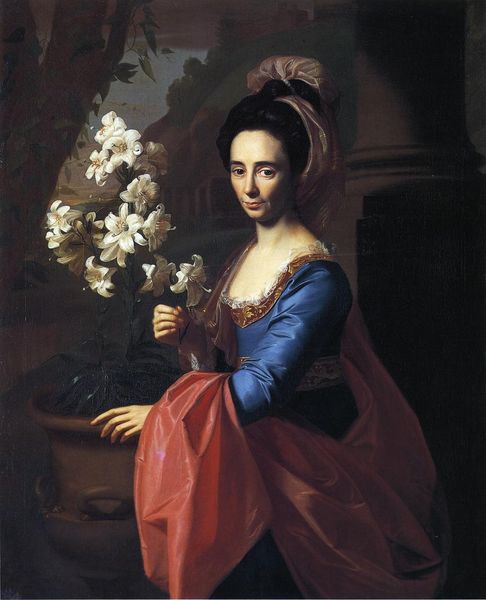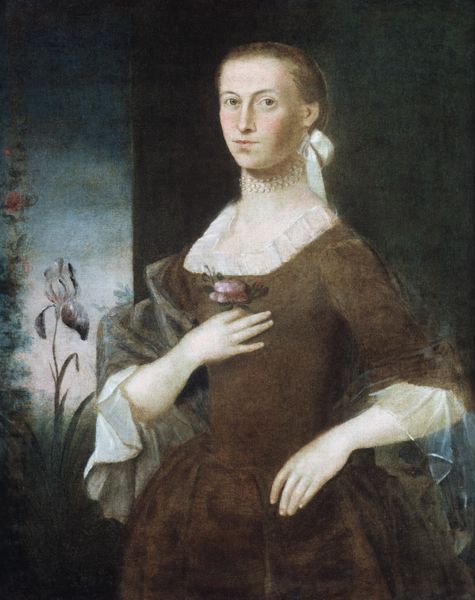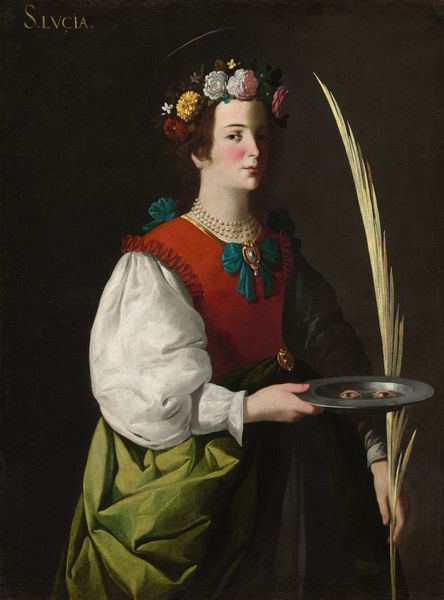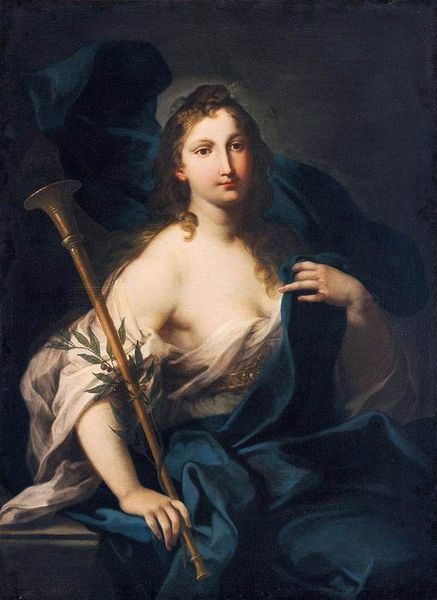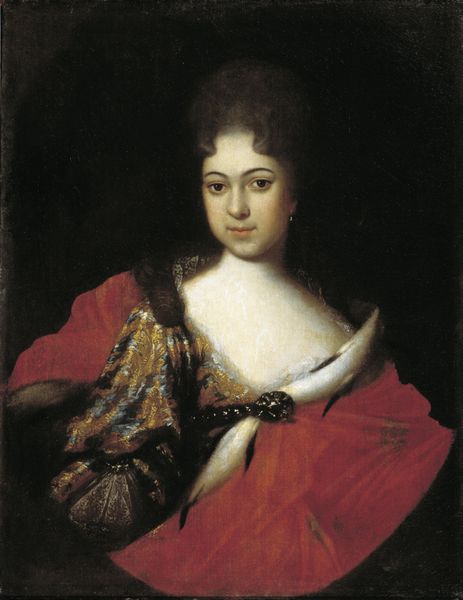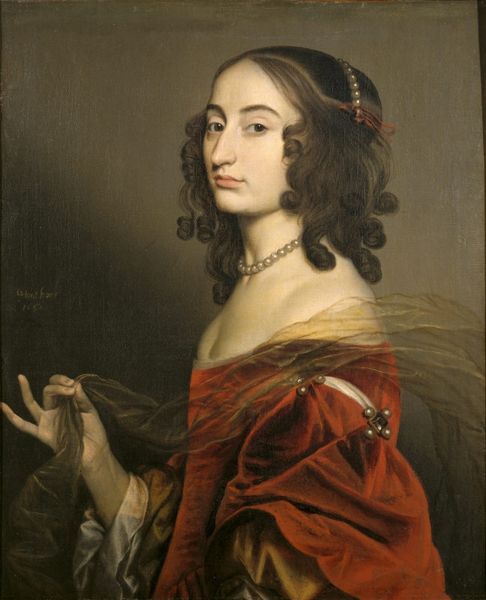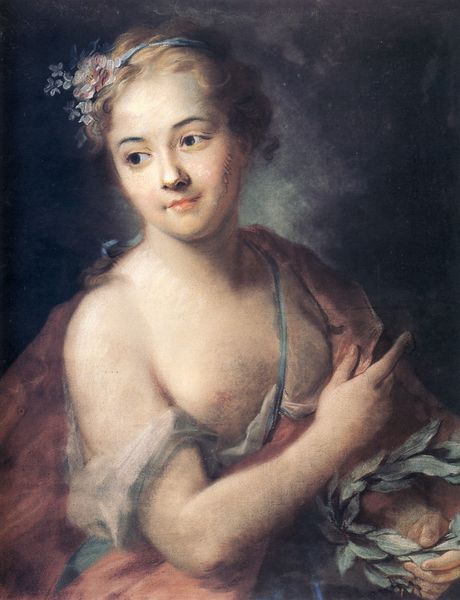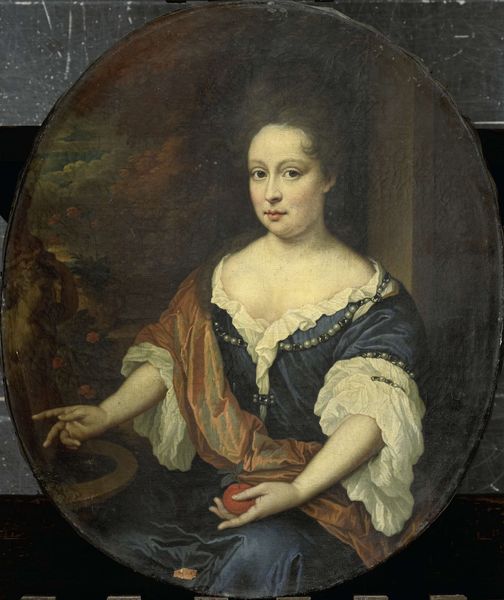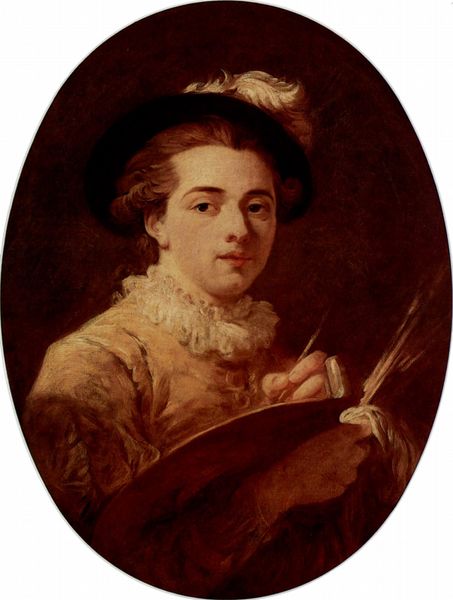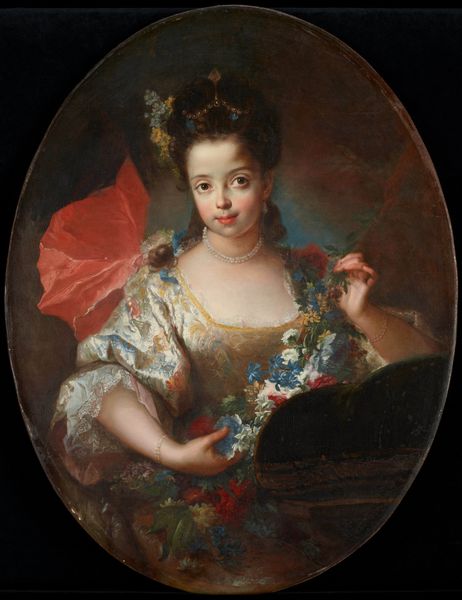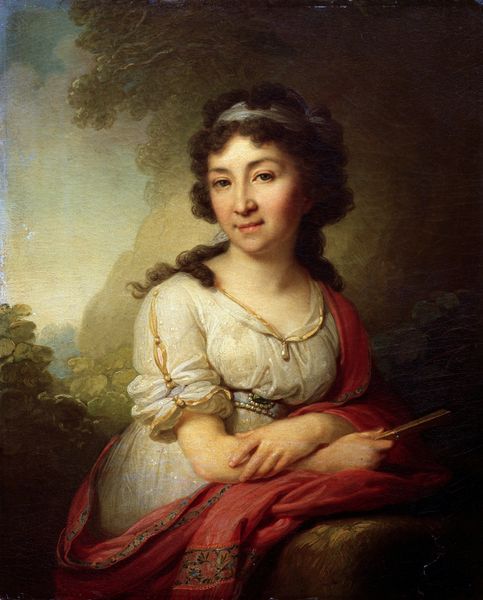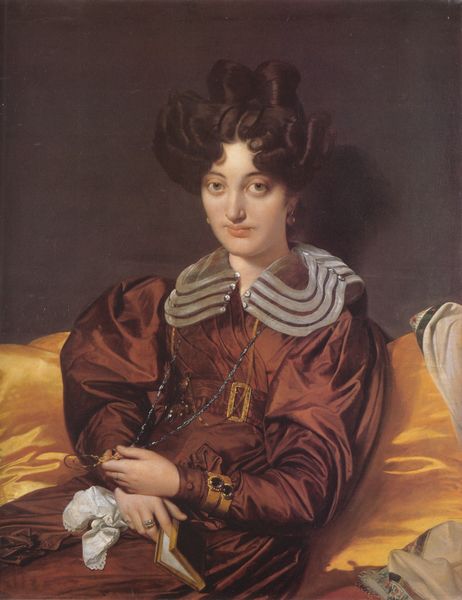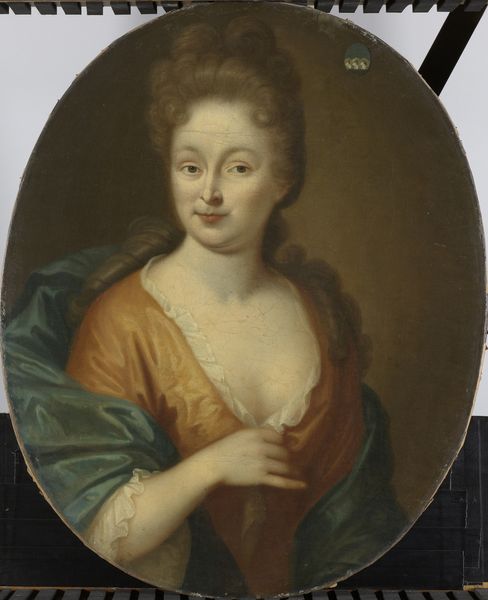
painting, oil-paint
#
portrait
#
allegory
#
baroque
#
painting
#
oil-paint
#
figuration
#
christianity
#
history-painting
#
realism
Copyright: Public domain
Bartolomé Estebán Murillo painted Santa Rufina, here at the Meadows Museum, using oil on canvas. Immediately, you’ll notice how the composition centres on the figure of Santa Rufina, her gaze meeting ours. The soft modelling of her face and the gentle gradations of light create a sense of serene beauty. Murillo uses a restricted palette, favouring earth tones and muted colours which imbue the work with a sense of warmth and intimacy. Rufina's attributes of pottery and palm fronds serve as signs referring to her role as the patron saint of potters. This semiotic play enhances the painting’s narrative depth, connecting the visual with broader cultural meanings. Consider, too, how Murillo challenges fixed meanings through his aesthetic choices. Rather than depicting Rufina in traditional, rigid iconography, he presents her with a humanity that destabilizes conventional hagiography. This approach, combined with the painting's formal qualities, invites ongoing interpretation, highlighting the fluidity of meaning in art.
Comments
No comments
Be the first to comment and join the conversation on the ultimate creative platform.
